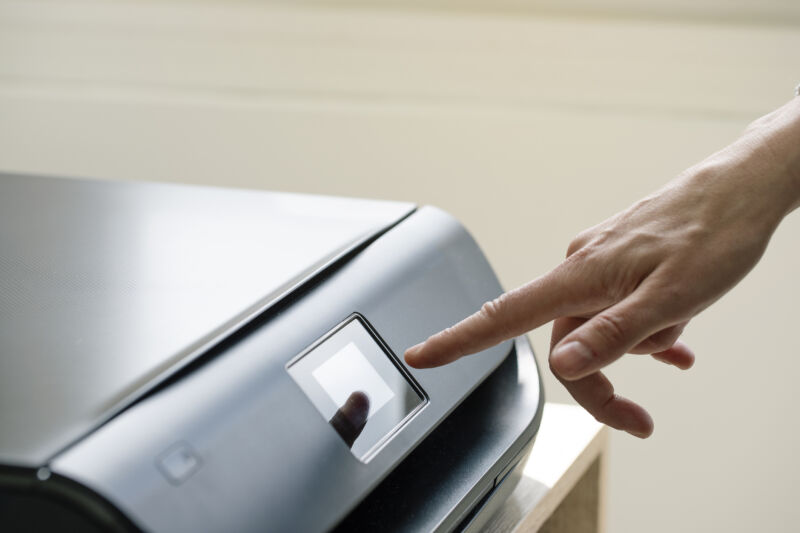
There was a time when laser printers were a luxury. High prices pushed them out of the budgets of most homes and small businesses decades ago, but they eventually became more affordable. But now, printer-vendor Epson is turning its back on the technology in favor of inkjet alternatives and self-bestowed sustainability cred.
As noted by The Register on Monday, Epson announced last week that it will stop selling and distributing laser printers by 2026, affecting both its consumer and business users. The Seiko-owned company proudly declared that the move is being done in the name of "sustainability," but the company still has a long way to go in that department.
Laser printers and sustainability
Epson's announcement said that its decision to focus completely on inkjet printers over laser ones is about the planet. And this is largely based on how laser printers work compared to inkjet. Laser printers rely on a laser, drum, toner, and heat to print an image. Inkjet printers, meanwhile, use nozzles to deposit ink.
"While laser printers work by heating and fusing toner to a page, Epson's heat-free inkjet technology consumes less electricity by using mechanical energy to fire ink onto the page," Koichi Kubota, Epson sales and marketing manager, said in a statement, per The Register.
In a 2021 blog post, Epson said that in a comparison, one of its inkjet business printers used "up to 85 percent less power" and created "85 percent less" carbon dioxide than one of its laser printers when printing 20 pages. However, without specific printer models and other details, we can't be sure this is an apples-to-apples comparison. Also, the discrepancies between inkjet and laser printers from other brands likely differ.
Epson also said its inkjet printers have fewer parts that may need replacement than laser ones. Component replacements for inkjet printers is primarily about ink and waste ink boxes (dealing with nozzle clogs is also a consideration), while laser printers may eventually need a new toner, drum, developers, fusers, and other components. According to a 2019 Epson blog post spotted by The Register, Epson's inkjet printers have "up to 59 percent less replacements parts compared to laser printers."
Because inkjet printers have fewer parts that could need replacing, they carry less downtime and maintenance requirements than their laser counterparts, Epson's press release argued.
The bigger issue
Epson's recent announcement touts a "commitment to sustainability," as well as Epson's planned 100 billion yen (about $722.2 million) investment into "sustainable innovation"—while also plugging its latest printers, of course. But this company's strategic shift doesn't feel like as grand of a green step as Epson's PR reps would like you to believe.
We don't have to tell you about the inherent environmental concerns around home and business printing. An oft-cited 2012 study reported that 375 million ink and toner cartridges enter US landfills annually, which doesn't even touch on the paper and energy consumption.
But people and businesses need to print things, and printer businesses and their employees have a need to keep those businesses alive. So we don't blame Epson for seeking a way to make its printer business appear greener. But we do lament it continuing to ignore a large environmental concern with its business that it could easily address.
As we reported in August, Epson has bricked printers over purportedly oversaturated inkpads, even if the printer would physically work otherwise. Epson does this, it says, because ink could leak throughout the printer. But designing products to stop functioning, also known as planned obsolescence, is a big no-no for green tech. We shudder to think of the number of functioning Epson printers that were thrown in the garbage by less technically trained users who didn't know the device was still usable.

This throwaway mindset is disturbingly commonplace in the printer industry. In 2020, for example, HP bricked ink cartridges outside of its Instant Ink subscription program and has also used DRM to block non-HP ink cartridges from working in HP printers.
User frustration
Despite concerns for the environment and consumer choice, Epson continues to brick printers that are capable of performing what its user requests. And that also results in frustrating user experiences, where printers abruptly cease working for seemingly no reason (and it always seems to happen the one time you need to print something). Printer companies don't have a history of implementing these processes smoothly behind the scenes. Earlier this year, Canon, for example, essentially broke its ink cartridges inadvertently while trying to prevent the use of non-Canon ink in its products.
Since this summer, Epson updated its support page to make it easier for users to reset its printers so they'll keep working and to highlight its recycling program.
But despite this month's restated commitment to the environment, it didn't address the aforementioned concerns at all. As numerous video tutorials have demonstrated, repairs like ink pad replacement can be performed by tech-savvy individuals, but trying to find Epson repair manuals, parts, or tools for Epson printers is nearly impossible. The company recommends having one of its partners change ink pads, for instance, shunning DIYers and local repair shops.
reader comments
334